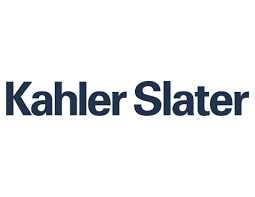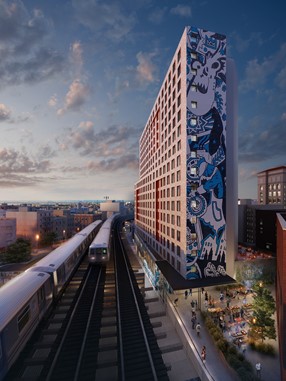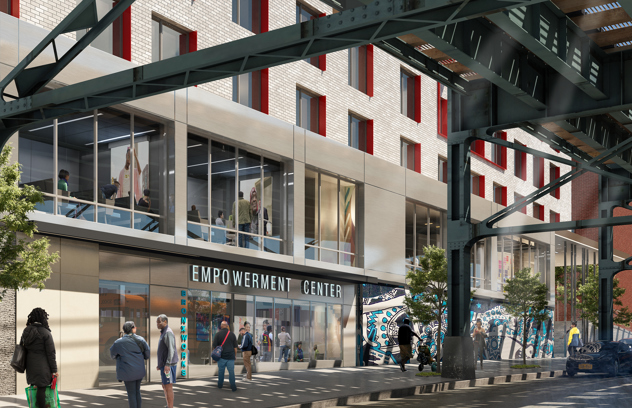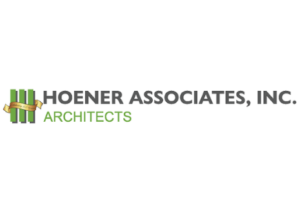
Striving for Sustainability in Architecture Design

A Case Study in Green Housing Design.
 Using thoughtful design, rich experience and innovative tools, Bernheimer Architecture (BA) is committed to crafting sustainable and resilient architectural designs that enhance the well-being of communities and the environment. Its partnership with Symetri, a leading provider of digital solutions for the architecture, engineering, construction, owners (AECO) and manufacturing industries, bolsters BA’s sustainability efforts by prioritizing sustainable practices and advanced tools early in the process. Using digital solutions, including Autodesk’s Revit, BIM Collaborate Pro, and Navisworks, for complex modeling and analysis, it can focus on material health, strive for greater energy efficiency, and lower carbon footprints.
Using thoughtful design, rich experience and innovative tools, Bernheimer Architecture (BA) is committed to crafting sustainable and resilient architectural designs that enhance the well-being of communities and the environment. Its partnership with Symetri, a leading provider of digital solutions for the architecture, engineering, construction, owners (AECO) and manufacturing industries, bolsters BA’s sustainability efforts by prioritizing sustainable practices and advanced tools early in the process. Using digital solutions, including Autodesk’s Revit, BIM Collaborate Pro, and Navisworks, for complex modeling and analysis, it can focus on material health, strive for greater energy efficiency, and lower carbon footprints.
"Lowering the total and embodied carbon in our projects while building to high performance standards means our buildings will have a far smaller carbon footprint than business as usual. Our focus is on data transparency and utilizing software to evaluate our impact and make big changes for sustainability," said Brandon Pietras (AIA LFA), project architect at BA and lead of their sustainability working group, BADecarbonization.
Decarbonization and Sustainable Lifecycle Analysis
Targeting and lowering the ‘carbon spike’ at the beginning of a project makes a strong impact on sustainability goals, which carries on throughout the lifecycle of the building. "Reducing embodied carbon is as crucial as improving operational efficiency. By minimizing the initial ‘carbon spike’ in our projects - in concert with optimized systems and onsite renewables - we hope to achieve a net negative carbon impact over our projects’ lifespans,” explained Pietras.
Specifying energy efficient appliances and light fixtures is standard procedure in all designs. Building projects in urban environments, close to transit hubs and public transportation, is also typical practice. With the enormous array of databases and information sources available for lifecycle analysis and data collection, it can be difficult for firms like BA to navigate and effectively deploy the best solutions for their decarbonization objectives. However, working with Symetri, BA can achieve a true and cohesive lifecycle analysis and easily package GWP parameters into a deployable schematic focused on the most impactful assemblies such as exterior walls, primary structural components, and roofs.
Innovative Environmental Workflow and Metrics
River Commons, an affordable housing project in New York, will be the first case study at BA to deploy the methodology developed with Symetri. A full collaborative GWP-tracking workflow within Revit makes it easier for their designers to integrate existing workflows with lifecycle analysis tools and better quantify the impact of materials. Working together with Symetri’s co-innovation practice, where insights are transformed into innovative solutions, helped to create an effective solution for BA. The methodology will help to measure and reduce the environmental impacts of buildings, achieve green building certifications, and comply with regulations. Especially useful to the designers at BA is the ability to use this workflow to represent embodied carbon graphically, an essential tool when communicating the implications of material and design choices to clients and stakeholders. This understanding trickles down with the collaboration solution tool, Autodesk BIM Collaborate Pro, to project managers and developers to help shape the project moving towards aligned goals focused on sustainability and climate control.
 Photos provided by Bernheimer Architecture
Photos provided by Bernheimer ArchitectureSustainability Success and Achievements
Implementing pACI with BA provides significant value, saving an estimated 16 hours per project team for every submission date throughout the project design phase. This streamlined process not only cuts LCA tool costs but also reduces overhead, making sustainable design accessible to more clients. BA's commitment contributes to local sustainability, fostering economic growth in the areas they build. It has successfully refined specifications, achieving over a 50% carbon reduction in a common wall type. These impactful results position BA to improve the resiliency of all their future projects.
"Highlighting the social and environmental impacts of our material choices is essential,” said Pietras. “By making informed decisions and advocating for better practices, we can create buildings that positively impact both local communities and the planet."
Powerful Outcomes for Broader Sustainability
Utilizing a powerful collaboration tool at a project’s onset, with information that scales with the level of detail needed, results in fewer errors and a better focus on the carbon perspective with structure elements and units. The choices made on building materials, trades used, and design have a lasting impact. Internal success becomes external success by creating a stronger connection between the project, the clients, the stakeholders, and community.
"Engaging in sustainable practices isn't just about doing the right thing; it's about driving industry-wide change. By advocating for better practices and pushing for more sustainable options, we aim to create a ripple effect that extends beyond our projects."
BA is taking meaningful, positive steps towards creating a more resilient community both on the building scale and as a component of New York City’s housing infrastructure. Prioritizing sustainability impacts the city itself and the future of the built environment and creates a healthier community.
For more information, visit the website for Bernheimer Architecture.




